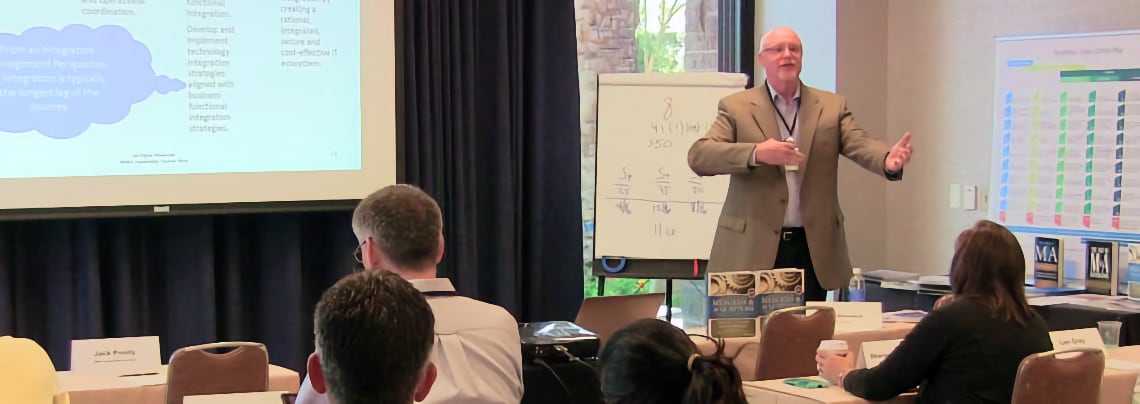Senior executive teams consistently underestimate the time and energy required to identify, assess, and address the many decisions that arise when two complex organizations combine in a merger or acquisition. More than a few CEOs have done the glamour work of negotiating a deal and thereupon handed off the dirty work of meshing structures, systems, and procedures to operations managers.
“Unfortunately for most companies, as statistics bear out, the vast majority of mergers just don’t go as planned. In fact, most mergers are driven by the need for growth, but at the expense of shareholder value.” The new CEO of a Fortune 500 company leaned back in his chair and astutely offered this to his new management team, “Well, I’m convinced that merger integration
Culture clash in a merger or acquisition is a lot like breathing. You don't notice you’re breathing, you just do it. You may be aware of your breathing now, because I have raised it to your attention. If someone were to approach you from behind, cup their hands firmly around your mouth and nostrils, and threaten your ability to breathe, then you would certainly pay attention to breathing. The same holds true for culture in a corporate combination. People don't
Welcome, everyone, to the new “M&A Monthly”, our newsletter to the M&A community. This information piece is an expansion beyond the former Alumni Newsletter. It is our goal to provide timely information, insights and new practices as the Council discovers better ways to address the challenges in M&A.
A Roadmap for a Successful International Integration
"Closing" an acquisition does not automatically make it a success. Rather, much of the benefit and value of an acquisition can be realized (or not) in the post-acquisition integration of the organizations. This is especially important when the acquired company has operations in multiple countries outside the US. In-house counsel often find themselves responsible for managing these global integrations, and navigating different legal systems, employee rights and expectations.
"Real Life" Success Stories, Best Practices & Case Studies
I have shared this best practice during previous Art of M&A Integration workshops, but I believe it bears repeating, especially in today’s world of internet and social media.
Years ago, a client pinpointed the M&A readiness challenge…“Once the deal took off, our team never caught up.” Admittedly, anyone in the M&A business has had the experience of chasing a speeding train down the tracks after it had already left the station. If you are like me, you vowed never to do that again.
No matter the number of case studies one researches or the number of consultants one talks with, the statistics have remained the same for the last two decades. The majority of well-intentioned mergers fail to achieve the expectations set by management at the announcement. Interestingly enough, the reason for such dismal results is that past emphasis and energy has been placed on analysis and negotiation of the deal and seldom on how to actually deliver the value.
A common issue we hear from attendees to our M&A workshops and others is the lack of dedicated, qualified resources to effectively manage the integration effort. Most companies are typically “lean and mean,” with everyone already having full-time jobs. So how do you handle the demands required to drive the integration effort? Here are recommended alternatives to handling the shortage of resources we all typically face in a business integration effort.
